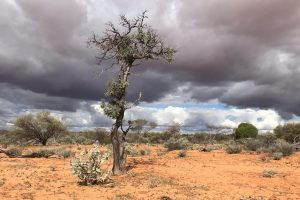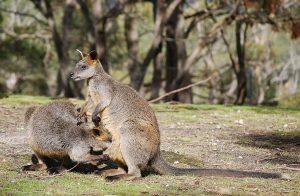Rabbits change entire ecosystems from the bottom up, and a couple of recent articles provide great examples of this, demonstrating how interconnected our environment is.
It all starts with rabbits eating native vegetation; often very selectively taking out seedlings of the tastiest species. They are so good at this that they can completely prevent the recruitment of young plants – removing those species from the local biota.
Richard McLellan, a research ecologist with Charles Sturt University, has warned that sandalwood trees could become extinct in Western Australia because there has been so little regeneration in the last 80 – 100 years. They are a ‘keystone species’, being integral to the survival of other species (e.g. by fruiting and flowering at different times to other plants), so their loss has consequences far beyond the loss of the trees themselves.
There are a mix of factors threatening the survival of sandalwood, and rabbits (and their selective grazing) are in amongst them.
Grazing by rabbits can change the type of vegetation remaining and can also be in direct competition with native herbivores, leaving them at a disadvantage to rabbits. Swamp wallabies of eastern Australia are one species to have suffered in this way from the proliferation of rabbits prior to the introduction of biological controls. Following the release of myxomatosis in Australia there was a significant reduction in rabbit numbers and swamp wallabies were able reclaim areas they had been forced from by rabbits.
Mackenzie Kwak, writing for ‘Remember the Wild’, has used swamp wallabies to demonstrate the intricate ‘web of life’ seen in nature with attention to their role in nutrient recycling, spreading spores and seeds, and providing food and habitat themselves for things as varied as dung-beetles, lice and even carrion-beetles. Without rabbit control, those ‘ecosystem services’ would not be possible.
For more information see:
- ABC News article on sandalwood and Richard McLellan’s work, by Samille Mitchell.
- Research article about sandalwood in The Rangeland Journal, by Richard McLellan
- Swamp wallabies story in Remember the Wild, by Mackenzie Kwak.
 Sandalwood; a keystone species affected by rabbits. |
 Swamp wallabies, recovered lost ground after myxomatosis was released. |
